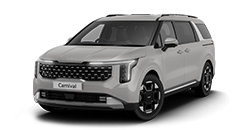open menu
- Home>
- discover kia>
- ASK>
- What is a hybrid car?
What is a hybrid car?
“Hybrid cars are powered by an internal combustion engine and an electric motor. These greener vehicles allow drivers to experience their more improved fuel economy than conventional cars.”
A hybrid car uses more than one means of energy, combining a petrol or diesel engine with an electric motor, and the two systems work with each other to move the vehicle. This allows the car to burn less gasoline, achieving better fuel efficiency than a traditional engine that solely uses fuel does. Electric power serves to boost the performance of the engine. Hybrids, except for plug-in hybrids, charge the battery through its internal system, so they do not need recharging. Plug-in hybrids are a halfway house between conventional cars and all-electric vehicles. So, they run on both an electric motor and an internal combustion engine but can charge its battery by "plugging in" to an outside electrical source.
The advantages of a hybrid car are:
1) Environmental friendliness
Hybrid cars house a gasoline engine and an electric motor, resulting in less dependence on fossil fuels, and producing low CO2 emissions.
2) Financial benefits
Many tax credits and incentives are available to make hybrid cars more affordable.
3) Regenerative braking system
The energy from the motion of applying the brake is captured and used to recharge the battery. Such a system allows you to eliminate the amount of time for regularly recharging the battery.
4) Higher resale value
With the growing popularity, hybrids’ resale value is higher than the average.
The disadvantages of a hybrid car are:
1) Higher costs
A hybrid car is comparatively expensive than a regular gasoline car, and its technology requires higher costs for maintenance.
2) Less power
The power of a combination of a gasoline engine and an electric motor in hybrid cars is less than that of a gas-powered engine in many cases.
3) Poorer handling
Hybrid vehicles have more machinery than regular cars do. Manufacturers’ attempts to avoid extra weight in vehicles result in smaller motor and battery in addition to reduced support in the suspension and body.
4) High voltage batteries
In case of an accident, the presence of the high voltage increases the risk of the passengers being electrocuted and makes the rescuers’ task more difficult.
● Parallel hybrids
These are the most common type of hybrid in which an electric motor and gasoline engine are connected in a common transmission that blends the two power sources. The vehicles are powered either directly by a gas engine, by an electric motor alone, or by the combination of both. The Niro employs a parallel hybrid system.
● Series hybrids
A gasoline engine is not connected to the wheels and only used to produce electricity for a generator that recharges the battery in this design. An electric motor serves to provide all the propulsion.
● Plug-in hybrids
In this design, the battery can be recharged by plugging an external source of electricity. It has such a large battery that a daily commute can be completed on its electric power only. After the electric range has run out, the car functions as a conventional parallel hybrid. The Niro Plug-In Hybrid and the Optima SW Plug-In Hybrid are a great choice for those who are looking for a plug-in electric hybrid.
● Mild hybrids
In this type of hybrid, an electric motor is not capable of moving the car by itself. A petrol or diesel engine does most of the work, and an electric motor serves to assist the gasoline engine in reducing fuel use, boosting performance, or both. The new Sportage lineup now includes Kia’s mild hybrid powertrain options.





